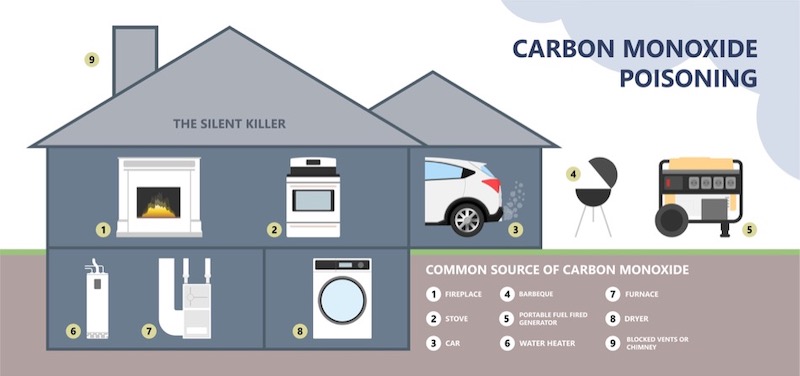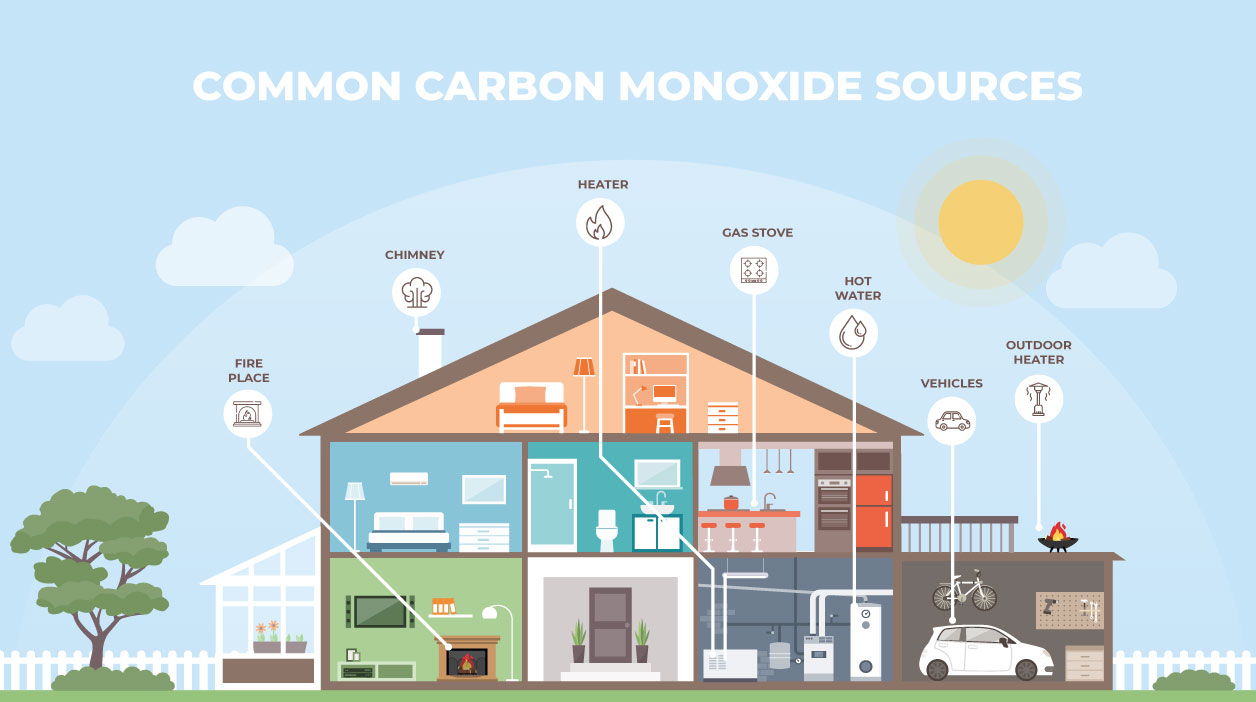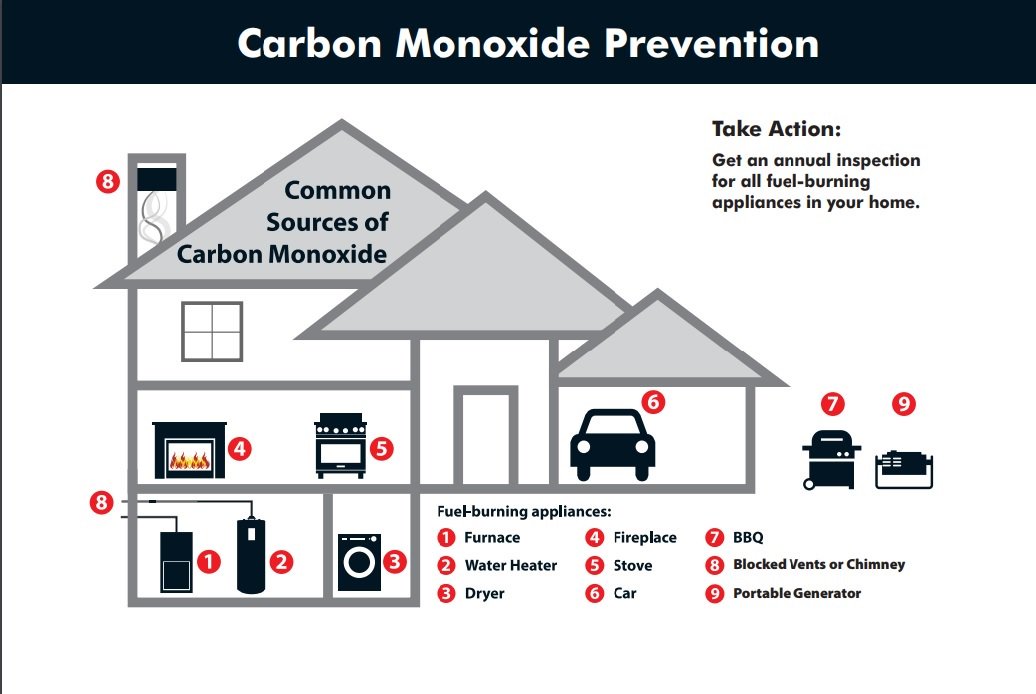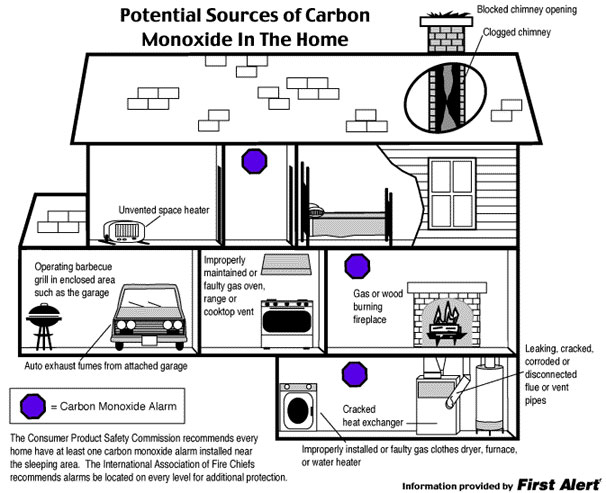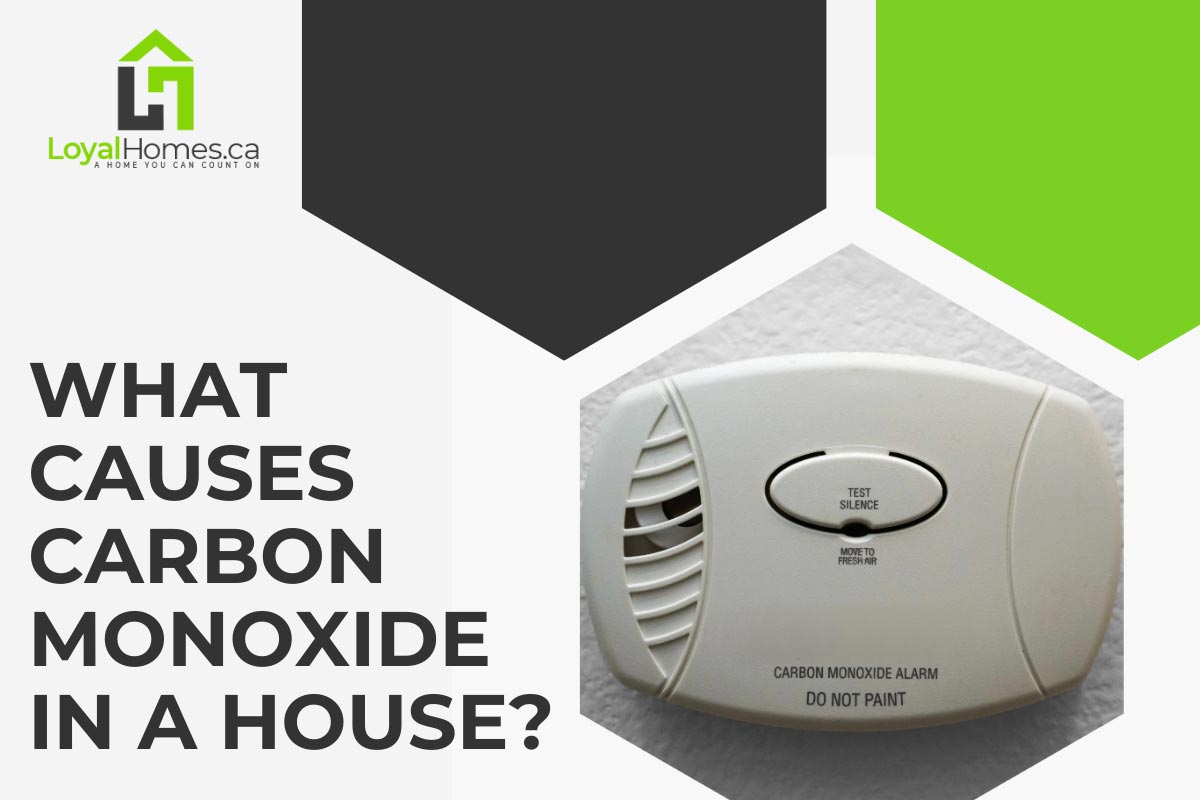What Creates Carbon Monoxide In The Home

Frequently Asked Questions About Carbon Monoxide in Your Home
Carbon monoxide (CO) is an odorless, colorless gas that can be deadly. It's crucial to understand where it comes from in your home and how to prevent its buildup. Here are answers to some common questions about CO production:
1. What exactly creates carbon monoxide in my home?
CO is produced whenever fuels like natural gas, propane, oil, kerosene, wood, or charcoal burn incompletely. This incomplete combustion happens when there isn't enough oxygen to fully burn the fuel. This is why proper ventilation is so critical.
Here are some common sources:
- Furnaces: Especially older or poorly maintained furnaces.
- Water heaters: Gas-fired water heaters can produce CO if not properly vented.
- Fireplaces: Wood-burning fireplaces can release CO, particularly if the chimney is blocked or not drawing properly.
- Gas stoves and ovens: While designed to burn cleanly, these appliances can produce CO if they're malfunctioning or improperly adjusted.
- Generators: Never use a generator indoors or in partially enclosed spaces like garages, even with the door open.
- Charcoal grills: Similar to generators, these should never be used indoors.
- Vehicles: Running a car or truck in an attached garage, even for a short time, can quickly produce deadly levels of CO.
- Portable Heaters: Kerosene or propane space heaters, if not properly vented, can be a significant CO source.
- Gas-powered equipment: Lawn mowers, snow blowers, and other gasoline-powered equipment should only be used outdoors.
2. My appliances are relatively new. Does that mean I don't have to worry about carbon monoxide?
No. While newer appliances are generally more efficient and have safety features, they can still produce CO if they malfunction or are not properly maintained. Even with new appliances, regular professional maintenance is vital.
Here's why:
- Malfunctions can occur: Even new equipment can have manufacturing defects or develop problems over time.
- Improper installation: Incorrect installation can compromise the appliance's ability to burn fuel efficiently and safely.
- Ventilation issues: Even if the appliance is working perfectly, a blocked chimney or flue can prevent CO from escaping.
- Age isn't everything: External factors, like the air-to-fuel mixture settings, can shift, leading to increased CO production over time, regardless of the appliance's age.
3. How can I tell if my appliances are producing too much carbon monoxide? Are there any warning signs?
Unfortunately, CO is invisible and odorless, so you can't rely on your senses to detect it. That's why CO detectors are so important.
However, there are some potential warning signs related to your appliances that might indicate a problem:
- Soot or black stains: Around a fireplace, furnace, or other fuel-burning appliance.
- Yellow or orange flames: On gas appliances. A healthy flame should be blue.
- Rusting or corrosion: On appliance vent pipes or chimneys.
- Excessive moisture: On windows or walls near appliances.
- Feeling sick or experiencing flu-like symptoms: Such as headaches, dizziness, nausea, fatigue, and confusion, especially when these symptoms improve when you leave the house. This is a key indicator that you should leave the house immediately and call for help.
- Visible damage: Obvious deterioration or damage to the appliance itself.
- Unusual odors: While CO itself is odorless, a malfunctioning appliance might produce other unusual smells.
If you suspect a CO leak, leave the house immediately and call your local fire department or gas company.
4. How can I prevent carbon monoxide buildup in my home? What steps should I take?
Prevention is key to protecting your family from CO poisoning. Here's a comprehensive list of steps you can take:
- Install CO detectors: Place them on every level of your home, especially near sleeping areas. Test them regularly and replace batteries at least twice a year.
- Schedule regular professional maintenance: Have your furnace, water heater, and other fuel-burning appliances inspected and serviced annually by a qualified technician. This is critical.
- Ensure proper ventilation: Make sure chimneys and flues are clear and unobstructed. Don't block vents.
- Never use generators, charcoal grills, or other fuel-burning equipment indoors or in partially enclosed spaces. This is an absolute must.
- Never run a vehicle in an attached garage, even with the door open.
- Be careful when renovating or remodeling: Dust and debris can block vents and flues.
- Choose vented appliances when possible: For example, use a vented range hood over your stove.
- Educate your family about the dangers of CO: Make sure everyone knows the symptoms of CO poisoning and what to do if they suspect a leak.
- Properly train your staff: Facility managers should ensure staff understand CO dangers and follow all maintenance protocols.
- Pay attention to unusual smells: Although CO is odorless, the smell of leaking gas is not. If you smell gas, leave the building and call the gas company or fire department.
5. Where should I place carbon monoxide detectors for the best protection?
Proper placement of CO detectors is crucial for early detection. Follow these guidelines:
- On every level of your home: This ensures you're alerted regardless of where the CO originates.
- Near sleeping areas: CO can be most dangerous when you're asleep and less likely to notice symptoms.
- Follow manufacturer's instructions: Each detector may have specific placement recommendations.
- Avoid placing detectors near:
- Furnaces or other fuel-burning appliances: This can trigger false alarms.
- Bathrooms: Steam and moisture can damage the detector.
- Garages: Exhaust fumes can trigger false alarms.
- Direct sunlight or drafts: These can affect the detector's sensitivity.
- Wall or ceiling mounting: Detectors can be mounted on the wall or ceiling. If mounting on the wall, place them about five feet from the floor.
- Consider local regulations: Some jurisdictions have specific requirements for CO detector placement.
6. How often should I replace my carbon monoxide detectors?
Carbon monoxide detectors don't last forever. Most have a limited lifespan, and their sensors can degrade over time. It is critical to replace them when you need to.
- Check the manufacturer's instructions: Most CO detectors have an expiration date printed on the device or in the manual.
- Typically, replace detectors every 5-10 years: Even if the detector seems to be working, its sensor may be less accurate over time. Err on the side of caution and replace it within the recommended timeframe.
- Replace immediately if the detector alarms unexpectedly and repeatedly: Even after addressing the potential source of CO, the detector may be faulty.
- Consider upgrading to combination detectors: Some detectors combine CO detection with smoke detection for added protection.
7. I'm a facility manager for a large building. Do these guidelines still apply, and what else should I consider?
Absolutely. These guidelines are essential for all homes and buildings. However, facility managers need to consider additional factors due to the scale and complexity of larger buildings:
- Comprehensive CO monitoring system: Consider installing a building-wide CO monitoring system that provides continuous monitoring and alerts.
- Regular maintenance program: Implement a strict maintenance program for all fuel-burning appliances, including furnaces, boilers, and water heaters.
- Ventilation system inspection: Ensure the building's ventilation system is properly functioning and providing adequate airflow.
- Emergency response plan: Develop and implement a clear emergency response plan for CO leaks, including evacuation procedures and communication protocols.
- Staff training: Train all staff members on the dangers of CO, the symptoms of CO poisoning, and the proper procedures for responding to a CO alarm.
- Documentation and record-keeping: Maintain detailed records of all inspections, maintenance, and repairs related to fuel-burning appliances and ventilation systems.
- Compliance with regulations: Ensure compliance with all applicable building codes and regulations regarding CO detection and prevention.
- Consider specialized detectors: In environments with high levels of dust or other contaminants, consider using CO detectors designed for industrial or commercial use.
- Regular testing of the CO monitoring system: Ensure the system is functioning correctly and providing accurate readings.
- Tenant education: Educate tenants about the dangers of CO and the importance of reporting any suspected leaks.
By understanding the sources of CO and taking proactive steps to prevent its buildup, you can protect yourself and your family from this silent killer. Remember, a functioning carbon monoxide detector is your first line of defense. Stay safe!
